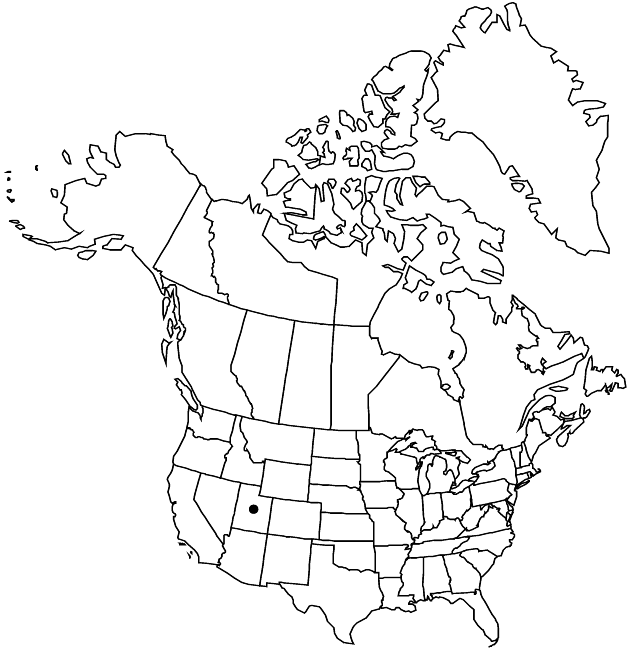Xylorhiza cronquistii
Brittonia 33: 302, fig. 8. 1981.
Subshrubs, ca. 30 cm. Stems branched mostly in proximal 3/4, sparsely villous and stipitate-glandular to subglabrous. Leaf-blades linear-lanceolate to narrowly oblanceolate, 2.5–6 mm wide, bases attenuate, not clasping, margins flat, usually shallowly spinulose-toothed, sometimes entire, faces sparsely villous. Peduncles 5–10 cm. Involucres 10–12 × 13–18 mm. Ray-florets 13–17; corollas white. Style-branch appendages ± equal or slightly shorter than stigmatic lines.
Phenology: Flowering Jun–Jul.
Habitat: Gray sand of the Kaiparowits Formation
Elevation: 1900–2100 m
Discussion
Of conservation concern.
Xylorhiza cronquistii grows in Kane County. S. L. Welsh et al. (2003) noted that it is “more or less intermediate in morphologic features between X. confertifolia and X. tortifolia var. imberbis; it occurs on habitats intermediate between the two parental types and is at the approximate summit of the distribution of the latter.”
Selected References
None.
